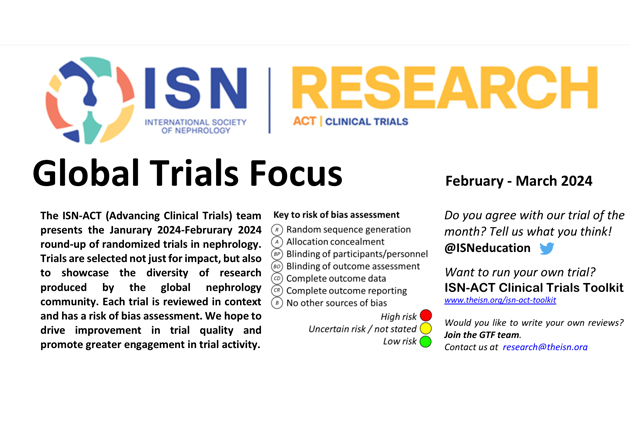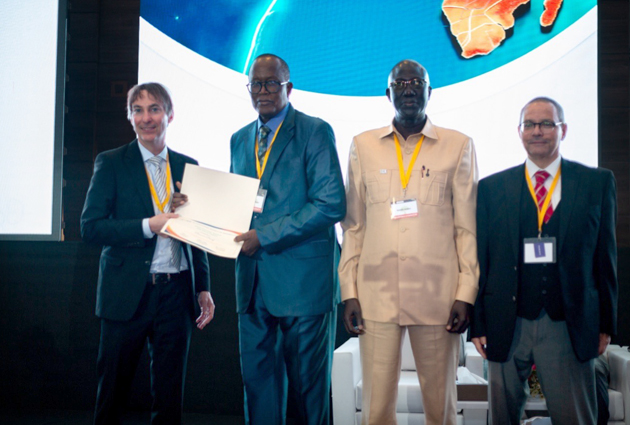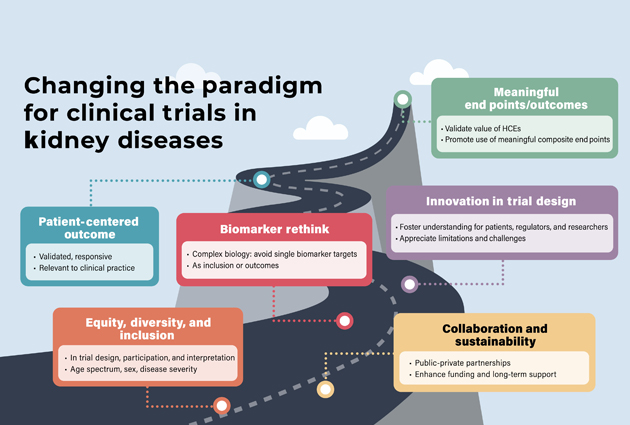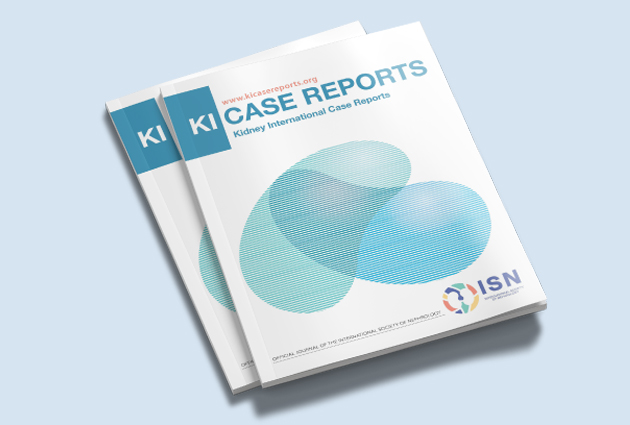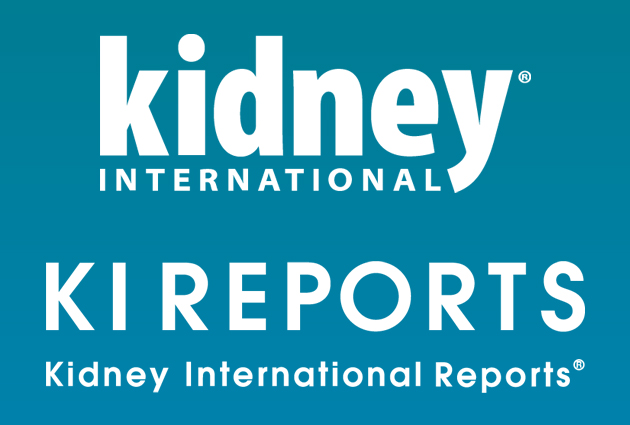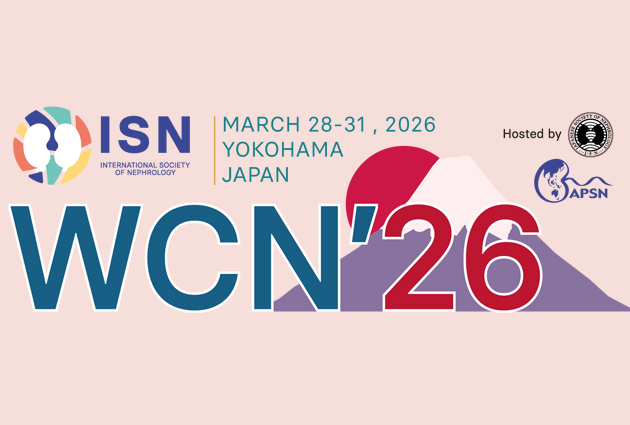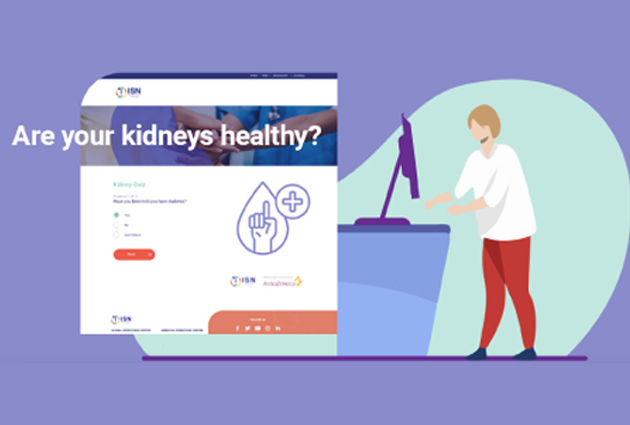Avacopan and Rituximab – A Promising Combination for Patients With ANCA-Associated Vasculitis
Read all global trial selections from the ISN-ACT initiative here. The “trial of the month” is available in several languages. In addition, selected clinical trials are demystified for the layperson.
ISN-ACT Global Trials Focus Subgroup member Nikolay Bulanov summarizes the design and outcomes of one of the ISN-ACT Global Trials Focus’s latest trial selections.
Efficacy and safety of avacopan in patients with ANCA-associated vasculitis receiving rituximab in a randomized trial
Gettha et al. Ann Rheum Dis. 2024;83(2):223-232
Summary:
This study analyzed a subgroup of 214 participants with a mean age of 59.8 years, 51.4% female, and 86% White, with ANCA-associated vasculitis who received induction therapy with rituximab (RTX) every 4 weeks in the double-blind, active-controlled trial, ADVOCATE.
In addition to RTX, 107 patients received a C5a receptor antagonist, avacopan (30 mg twice daily) with placebo-prednisone taper, and 107 received prednisone (60 mg/day tapered to 0 mg by week 21) with a matching placebo drug. Among these participants, 76.2% had renal vasculitis, and 58.4% were newly diagnosed.
The efficacy outcomes were remission by week 26 (defined as a Birmingham Vasculitis Activity Score (BVAS) of 0 without corticosteroid treatment in the preceding 4 weeks) and sustained remission (defined as maintaining remission at both weeks 26 and 52, with no corticosteroid treatment in the 4 weeks before week 52, and no relapse between weeks 26 and 52).
The majority of the avacopan group achieved remission at week 26 (83/107; 77.6%) and sustained remission at week 52 (76/107; 71%), while the prednisone taper group had remission rates of 75.7% (81/107) at week 26 and sustained remission at week 52 of 56.1% (60/107).
Following remission (BVAS of 0) at any time, the avacopan group showed a decreased relapse rate (9/107; 8.7%) in contrast to the prednisone taper group (21/107; 20.2%), with a reduction of relapse risk of 58% (HR 0.42, 95% CI, 0.19 to 0.91).
The recovery of kidney function and improvement in urinary albumin to creatinine ratio also favored the avacopan group. The rate of serious adverse events was similar in the avacopan (34.6%) and prednisone taper groups (39.3%). However, glucocorticoid-induced toxicity (as assessed by the Glucocorticoid Toxicity Index) was greater in the prednisone taper group than in the avacopan group.
Commentary
Despite low incidence, with an estimated global pooled incidence (95% CI) of 17.2 per million person-years (13.3–21.6), ANCA-associated vasculitis (AAV) is the most common cause of rapidly progressive glomerulonephritis in adults.
For more than a decade, the combination of glucocorticoids and either cyclophosphamide (CYC) or rituximab has remained the standard of care; however, these regimens are associated with significant treatment-related toxicity, thus there is a need for new therapeutic agents. The efficacy and safety of avacopan in combination with RTX or CYC for the induction therapy of AAV have been previously demonstrated in the randomized trials CLEAR and ADVOCATE, leading to the inclusion of the drug in the updated EULAR 2022 and KDIGO 2024 guidelines.
This subgroup analysis of the ADVOCATE trial re-confirms the efficacy and safety of the avacopan-RTX combination to induce and sustain remission in patients with AAV, including those with kidney involvement.
It should be noted that the results have limited generalizability because the patients did not receive repeat maintenance dosing of RTX at week 26 as recommended in current international guidelines, and participants with baseline eGFR <15 mL/min/1.73 m2 and/or alveolar hemorrhage on mechanical ventilation were not included. Further evidence is needed to evaluate the role of avacopan in this rare condition.

